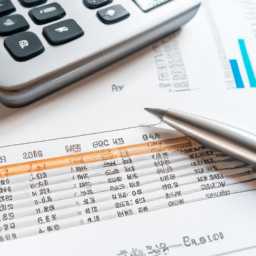
Economic Indicators Reports: A Comprehensive Guide
Introduction
Economic indicators reports play a crucial role in analyzing and understanding the overall health and performance of an economy. These reports provide valuable insights into various aspects of economic activity, helping policymakers, investors, and businesses make informed decisions. In this article, we will explore the significance of economic indicators reports and how they are used to gauge the state of an economy.
What are Economic Indicators?
Economic indicators are statistical data points that provide information about the current and future performance of an economy. These indicators can be broadly classified into three categories: leading indicators, lagging indicators, and coincident indicators.
Leading Indicators
Leading indicators are economic variables that tend to change before the overall economy starts to follow a particular pattern. These indicators are used to predict future trends and are often considered as early warning signs. Examples of leading indicators include stock market performance, building permits, and consumer sentiment.
Lagging Indicators
Lagging indicators, on the other hand, are economic variables that change after the economy has already started following a particular trend. These indicators confirm the direction of the economy and are used to validate or confirm predictions made by leading indicators. Examples of lagging indicators include unemployment rate, inflation rate, and GDP growth rate.
Coincident Indicators
Coincident indicators are economic variables that change simultaneously with the overall state of the economy. These indicators provide real-time information about the current state of economic activity. Examples of coincident indicators include industrial production, retail sales, and personal income.
Importance of Economic Indicators Reports
Economic indicators reports are crucial for several reasons:
1. Assessing Economic Performance: These reports help in evaluating the overall performance of an economy. By analyzing various indicators, policymakers and economists can determine whether an economy is expanding or contracting, and identify areas of concern.
2. Predicting Economic Trends: Economic indicators reports provide valuable insights into future economic trends. By studying leading indicators, analysts can make predictions about the direction an economy is likely to take, helping businesses and investors make strategic decisions.
3. Policy Formulation: Governments and central banks rely on economic indicators reports to formulate and adjust their policies. For instance, if inflation is rising, policymakers may implement measures to control it, such as increasing interest rates.
4. Investment Decision-making: Investors use economic indicators reports to assess the attractiveness of different markets and sectors. By analyzing indicators like GDP growth, unemployment rate, and consumer spending, investors can make informed decisions about where to allocate their capital.
Conclusion
Economic indicators reports serve as essential tools in understanding and analyzing the performance of an economy. By providing insights into various economic variables, these reports enable policymakers, investors, and businesses to make informed decisions. Whether it’s predicting future trends, formulating policies, or making investment decisions, economic indicators reports play a vital role in shaping economic strategies and driving growth.